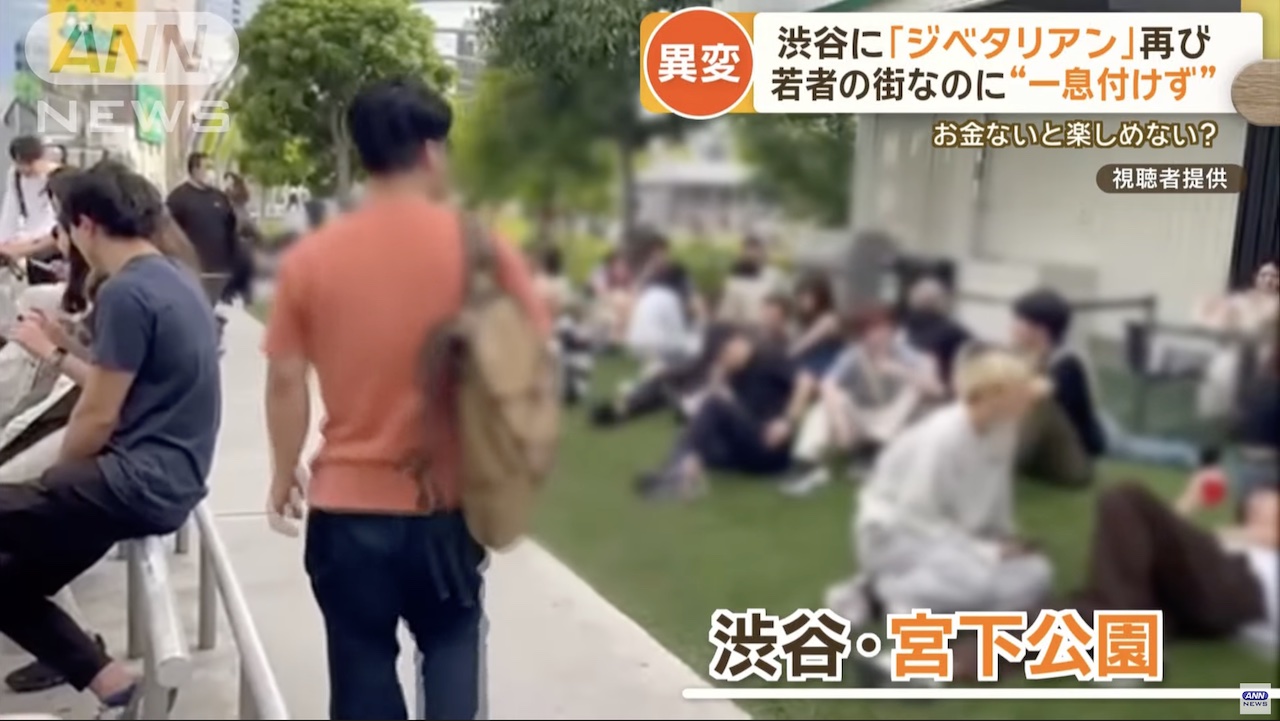TOKYO, Oct 24 (News On Japan) - Shibuya, long recognized as a vibrant hub for young people in Tokyo, is undergoing significant changes due to rapid urban redevelopment. With the influx of foreign tourists and increased congestion in public spaces, young people are finding fewer places to gather and relax.
Cafes are overcrowded, often with long lines, and the city's public spaces, such as parks and benches, are being altered to discourage loitering. This has led to the resurgence of the "Jibutarians," a term used to describe young people sitting on the ground in public spaces, reminiscent of similar scenes from the 1990s. As Shibuya becomes less accommodating for youths, these changes are raising questions about the future of the city’s social atmosphere.
One of the most noticeable changes is the transformation of public seating areas. Benches are being redesigned to prevent people from sitting for long periods, and their numbers are decreasing. This shift is part of a broader move to reduce the number of young people loitering in public spaces, which is seen as a measure to improve public safety. In the 1990s, youth subcultures like "Chimā" and "Kogyaru" were prominent in Shibuya, and their presence on the streets was often criticized. Today, similar concerns are resurfacing as the city changes its landscape to push young people away from its commercial center, forcing them to seek out less conspicuous areas such as Miyashita Park.
At the same time, Shibuya is evolving into a business district, driven by large-scale redevelopment projects. New mixed-use facilities, like the recently opened Shibuya Axsh, combine commercial spaces with office buildings. This marks a significant shift from Shibuya's past identity as a youth-oriented area to a business center that attracts companies and professionals. Over the past decade, several new office buildings have been constructed around Shibuya Station, further establishing its role as a key business district in Tokyo. Many now view Shibuya as a place where work and leisure coexist, enhancing its appeal to businesses.
However, as the city becomes more convenient and commercialized, there are concerns that it may lose the youthful energy that once defined it. The gradual displacement of young people from Shibuya’s central areas raises questions about the city’s future identity. Some fear that Shibuya could become known solely as a business district, lacking the vibrancy and cultural significance it once held for younger generations. The ongoing redevelopment is reshaping not only the physical structure of the city but also its social fabric, prompting reflection on what kind of community Shibuya should aspire to be in the future.
Source: ANN
















